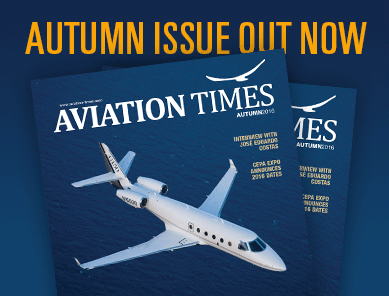Airbus partnership aims to help aircraft “avoid” volcanic ash dangers
 An Airbus collaboration with easyJet and Nicarnica Aviation has successfully flight tested a system that allows pilots to “see” volcanic ash clouds – which pose a risk to jet engines – and safely navigate around them.
An Airbus collaboration with easyJet and Nicarnica Aviation has successfully flight tested a system that allows pilots to “see” volcanic ash clouds – which pose a risk to jet engines – and safely navigate around them.
Attached to an Airbus A340-300 in-house jetliner, the Airborne Volcanic Object Imaging Detector (AVOID) technology detected an artificial ash cloud from a distance of 60 kilometres and accurately measured its concentration.
Airbus played a further role in the evaluation, creating the cloud by deploying one tonne of Icelandic ash from an A400M test aircraft between 10,000 and 12,000 feet altitude.
“Airbus, since it was first formed more than 40 years ago, has supported and performed many test programmes both independently and also in collaboration with other organisations,” said Airbus’ Executive Vice President Engineering Charles Champion. “With AVOID, we wanted to prove that the ash-detection concept can work and this has been demonstrated in the test. Now we need to analyse all data gathered.”
Created by Dr. Fred Prata of Norway’s Nicarnica Aviation, the AVOID technology is similar to the weather radar system which is standard on commercial jetliners today, utilising infrared technology to supply images to pilots and operations control centres.
U.K.-based easyJet – the largest Airbus A320 Family customer and operator in Europe – plans to be the first airline to deploy the system following further testing and its certification by airworthiness authorities. AVOID could then be used to gather data needed to plan safe routes through areas affected by volcanic ash clouds.
“We are at the beginning of an invention which could become a useful solution for commercial aviation to prevent large-scale disruption from volcanic ash,” Champion said.
These new tests further Airbus commitment to evaluating the impact of ash on safe operations. In 2010, the company offered full technical assistance to authorities during the notable eruption of Iceland’s Eyjafjallajökull, which resulted in a major shutdown of European airspace and estimated global aviation losses of more than one billion euros.
Source: Airbus
Publishing or copying the content of AVIATION Times without a written electronic permission is strictly forbidden. If you have any information, tips, videos, photos or your press releases for us contact us at news@aviation-times.aero.
AVIATION TIMES © Copyright 2012 - 2025







